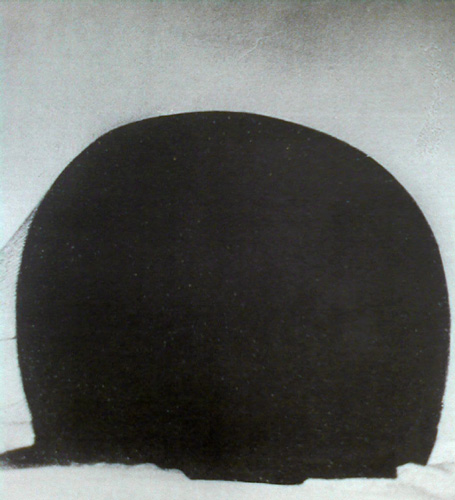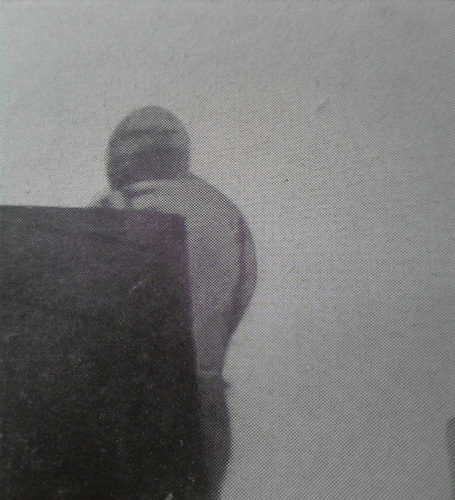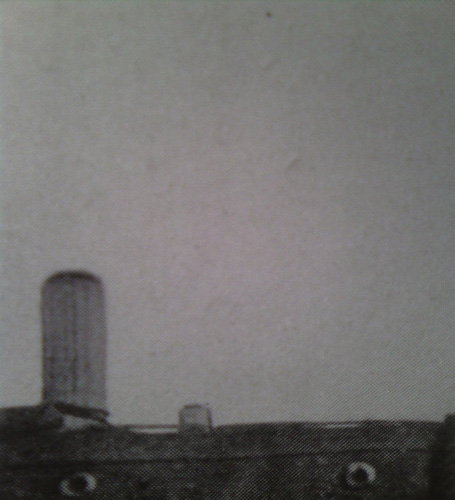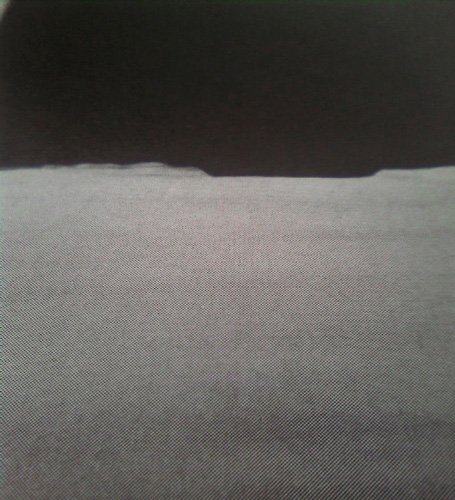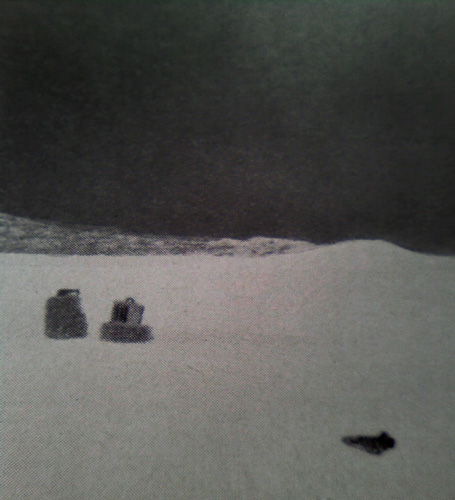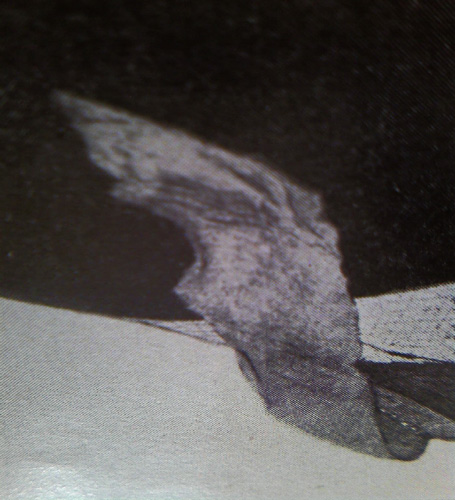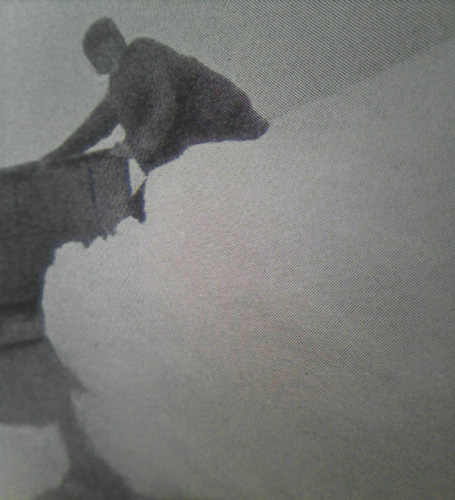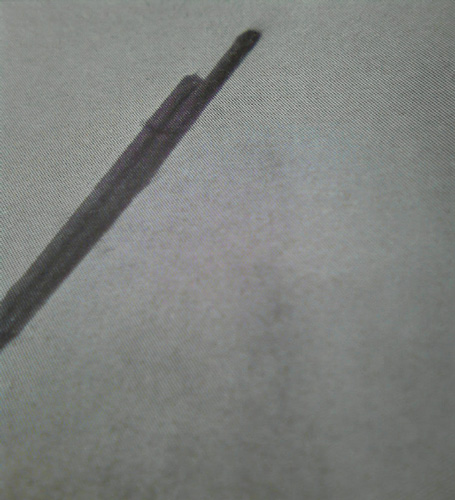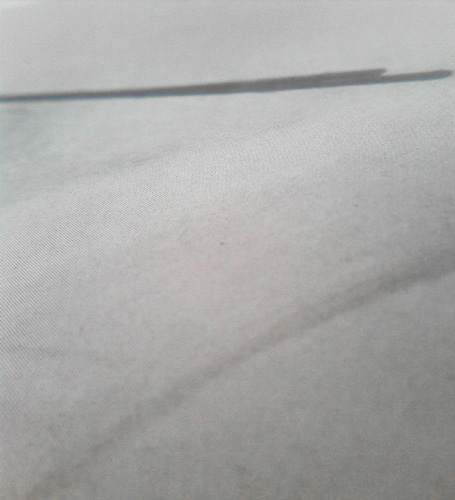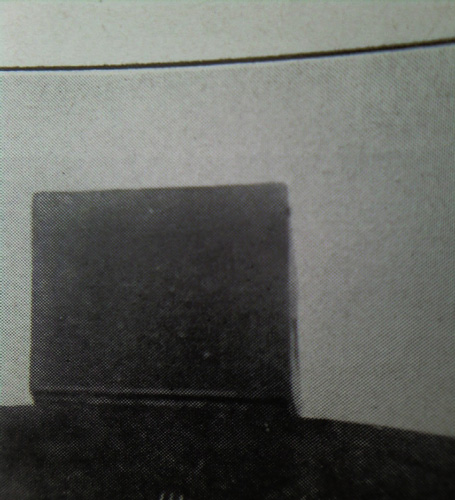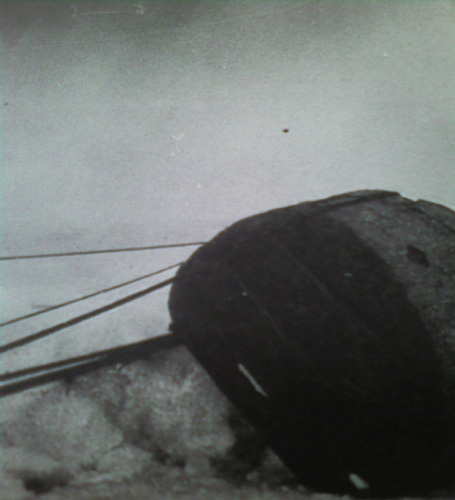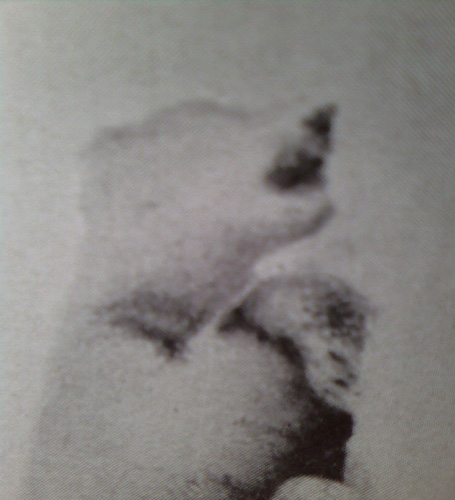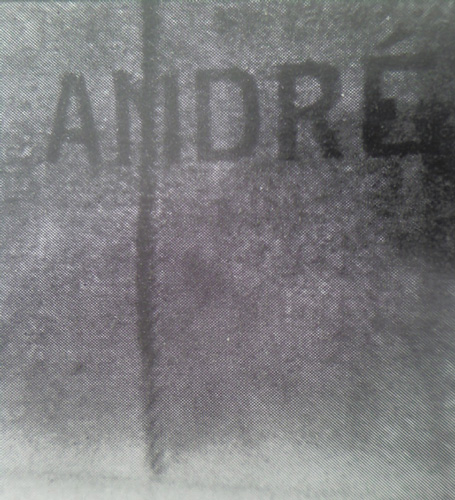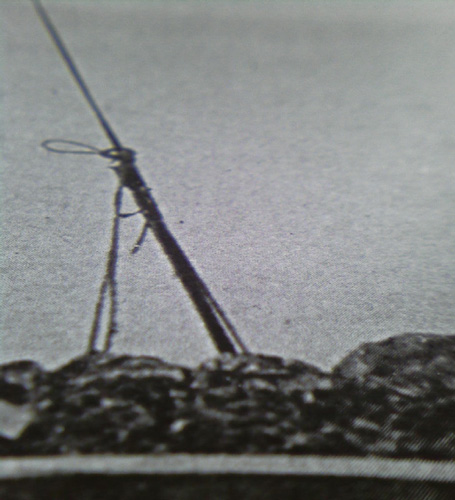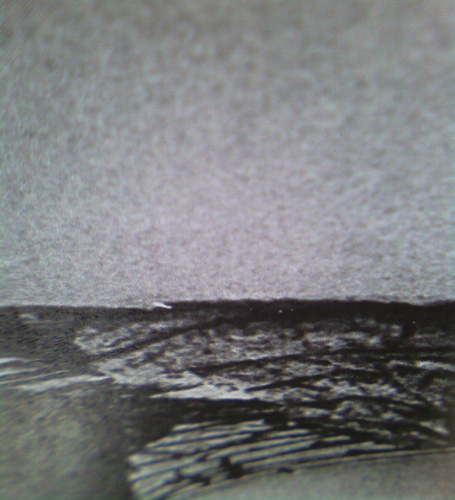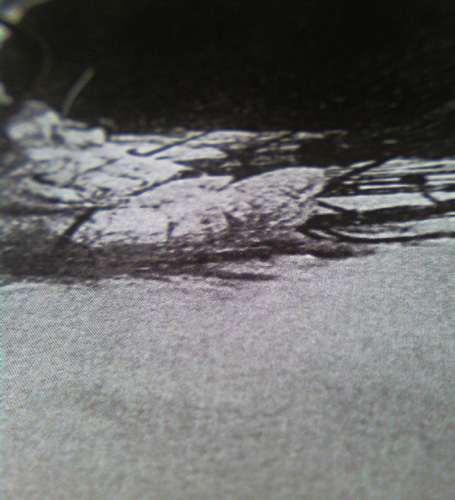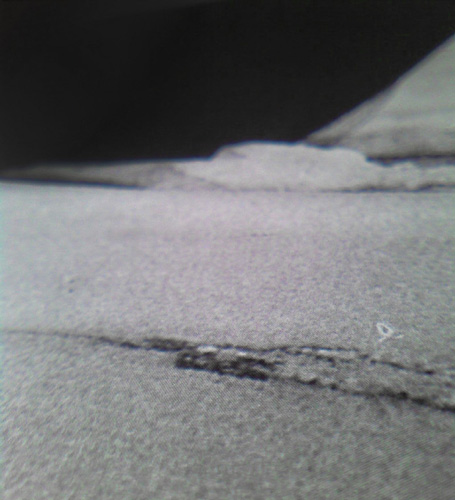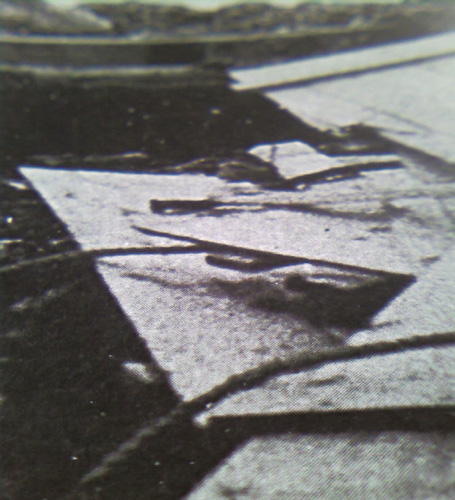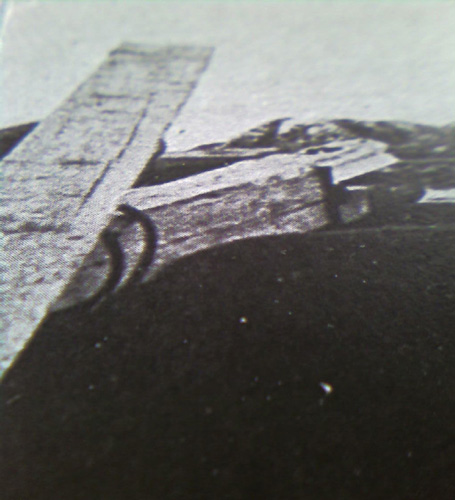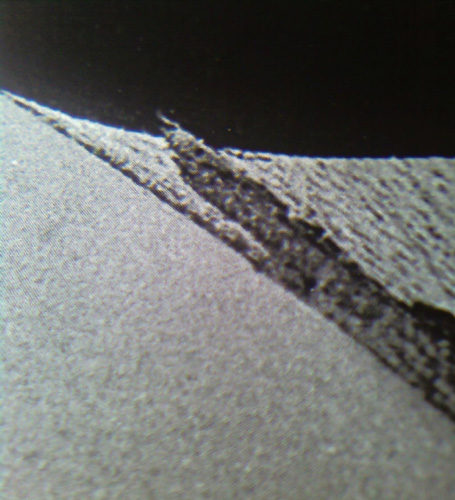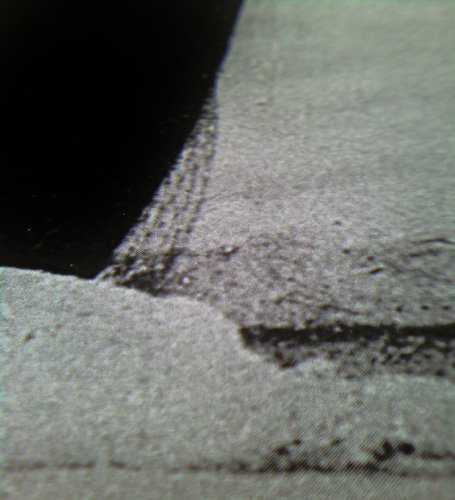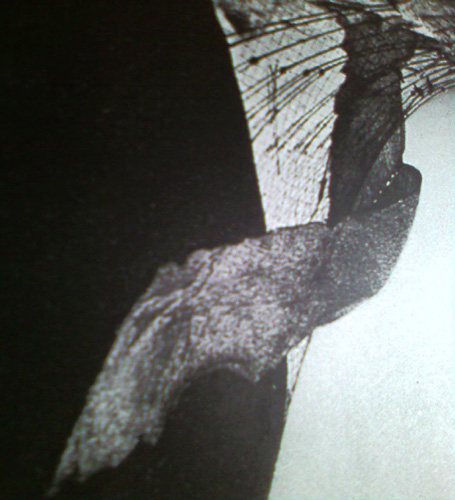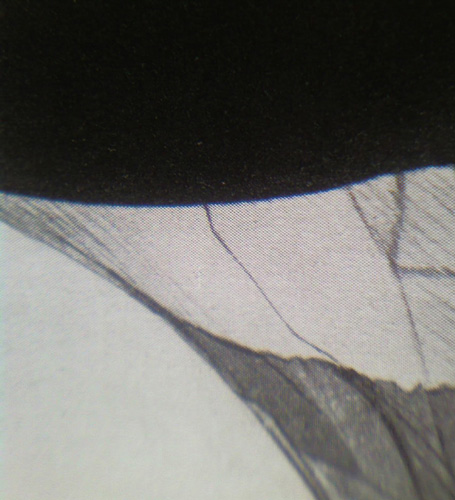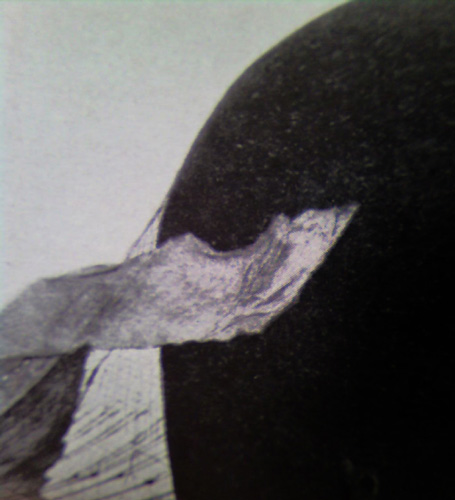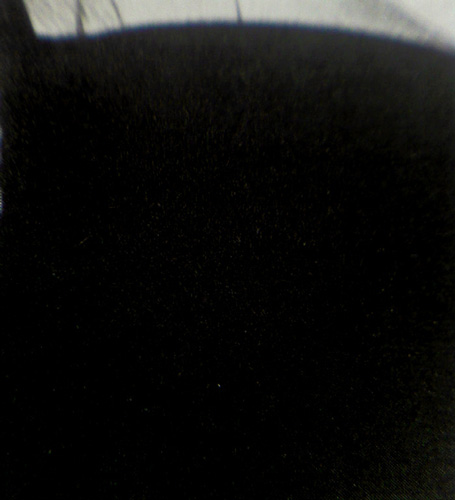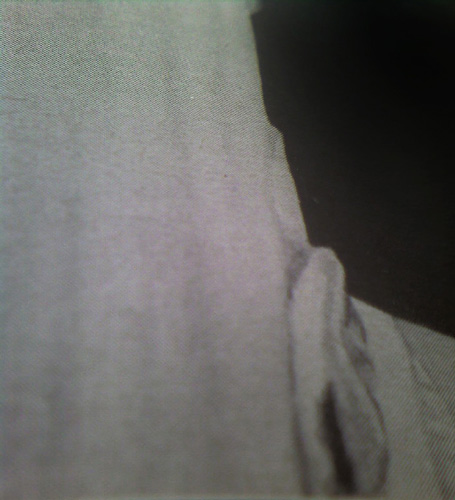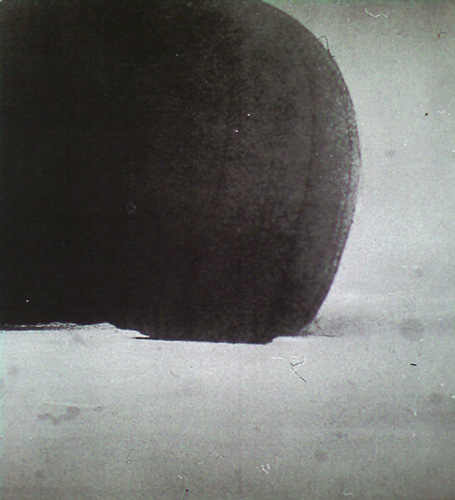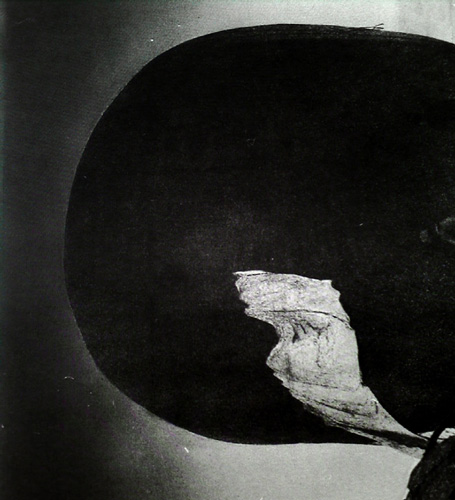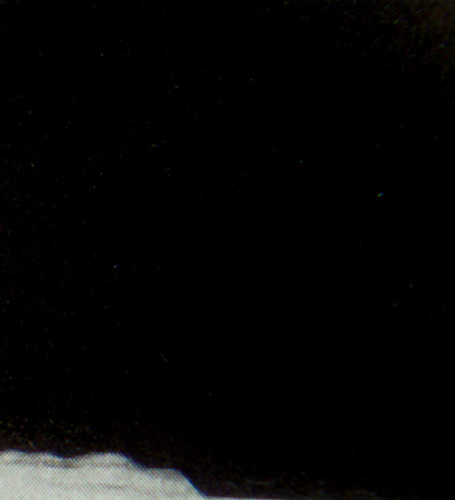from darkness down
twenty-nine photographs of a failure
photographs printed on Römerturm Museumskarton, 55 x 50 cm
remembering of a remembering
The background of Christof Rehm‘s images is the attempt to reach the North Pole with a helium balloon.
The expedition in 1896 failed disastrously. Thirty years later, when the remains of the three participants were found, the photographic films taken by one of them, Nils Strindberg, were also discovered. These were then printed in books and from there used by Rehm as a basis for his own photographs with a mobile phone. Through this photographic appropriation of Strindberg‘s pictures, a medial chain of transmission of more than 100 years is reflected in this work: the abstracted reduction of the greyscales of the film lying in the ice for decades, the dot screen of the printing press from the first half of the 20th century and finally the pixel structure of Christof Rehm‘s simple digital camera.
What we see is a memory of images. Or rather, it is not that memory but an approach to that memory. What is presented here is not a reproduction or an imitation, not a retrieval but the process of retrieving, the process of remembering. Images are remembering themself, trying to remember how it was, which they do not know, but can only try to remember.
It all starts with the eye of Nils Strindberg, looking through his lens and recording his pictures. What we see are blurred pictures. When they are more focused we recognise a dotted pattern, little colour, objects too. They stay ambiguously for the observing eye like the memory, never to be reached, but only now and then touched. The images are squeezing forward and then back again into the point from which they arose, except that it is no longer the same point but rather the memory of that point.
Then they are actualized figments of the artists memory, drawing on what he remembers, actively and passively, of seen landscapes here and there as well as paintings. This is a remembering of a remembering or a remembering of a remembering of a remembering, on down the mirrored corridor of memory. Memory repeats in the hope that the images may be made to mean something again, in the hope again that their meaning be anulled.
In those days, the daring departure of the polar exhibition led to bottomless failure. This venture, which in retrospect needed to end with the absolute abandonment of one‘s own self, can also be read as a symbol for the life as an artist. The images are remembering that failure, but they refuse to trust their own memory. The desaster could prove to be a triumph in the end...
Erinnerung an eine Erinnerung
Der Ausgangspunkt der Bilder von Christof Rehm ist der Versuch eines Expeditionsteams, den Nordpol mit einem Heliumballon zu erreichen.
Diese Expedition scheiterte 1896 katastrophal. Dreißig Jahre später, als man die Überreste der drei Abenteurer entdeckte, fand man auch die fotografischen Filme eines von ihnen, Nils Strindberg. Diese wurden dann in Büchern gedruckt und hier von Rehm als Grundlage für seine eigenen Fotos mit dem Handy verwendet. Durch diese fotografische Aneignung von Strindbergs Bildern spiegelt sich in dieser Arbeit eine mediale Übertragungskette von mehr als 100 Jahren wider: die abstrahierte Reduktion der Graustufen des jahrzehntelang im Eis gelegenen Films, das Punktraster der Druckerei aus der ersten Hälfte des 20. Jahrhunderts und schließlich die Pixelstruktur von Christof Rehms einfacher Digitalkamera.
Was wir sehen ist die Erinnerung der Bilder. Oder besser gesagt: es ist nicht diese Erinnerung, sondern eine Annäherung an diese Erinnerung. Was hier gezeigt wird ist keine Reproduktion oder Nachahmung, kein Wiedergewinnen, sondern der Prozess des Wiedergewinnens, der Prozess des Erinnerns. Die Bilder erinnern sich an sich selbst und versuchen sich zu erinnern, wie es war, weil sie es nicht wissen, weil sie nur versuchen können sich zu erinnern.
Alles beginnt mit dem Blick von Nils Strindberg, der durch seine Linse schaut und seine Bilder aufnimmt. Was wir sehen, sind verschwommene Bilder. Wenn sie schärfer sind, erkennen wir ein Punktraster, ein wenig Farbe, auch Objekte. Wie Erinnerungen bleiben sie für das betrachtende Auge mehrdeutig, werden nie ganz erfasst, sondern nur ab und zu gestreift. Die Bilder oszillieren vorwärts und dann wieder zurück an den Ursprung, aus dem sie entstanden sind, nur dass dies nicht mehr der gleiche Ort ist, sondern die Erinnerung daran.
Dazu sind diese Bilder vergegenwärtigte Schatten aus der Erinnerung des Künstlers, die er bewusst wie unbewusst heranzieht, hier und da gesehene Landschaften, Gemälde auch. Dies ist eine Erinnerung an eine Erinnerung oder eine Erinnerung an eine Erinnerung an eine Erinnerung an eine Erinnerung, weit zurück im vielfach verspiegelten Korridor des sich Erinnerns. Das Erinnern wiederholt sich in der Hoffnung, dass die Bilder gemacht wurden, um wieder etwas zu bedeuten, in der Hoffnung, dass ihre Bedeutung sich verliert.
In jenen Tagen führte das gewagte Unterfangen der Polarexpediltion ins absolute Scheitern. Dieses Abenteuer, das im Nachhinein betrachtet mit der totalen Aufgabe des eigenen Selbst enden musste, kann auch als Symbol für das Leben als Künstler gelesen werden. Die Bilder erinnern sich an jenes Scheitern, aber sie weigern sich, ihrer eigenen Erinnerung zu trauen. Die Niederlage könnte sich ja am Ende als Triumph erweisen...
contact
Christof RehmPavillon am Berghof
Bergstrasse 12
86199 Augsburg
mail@christof-rehm.de
www.christof-rehm.de
